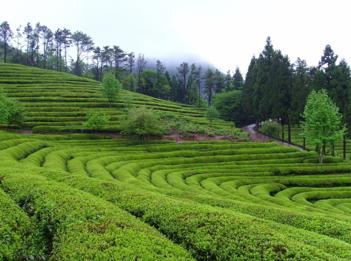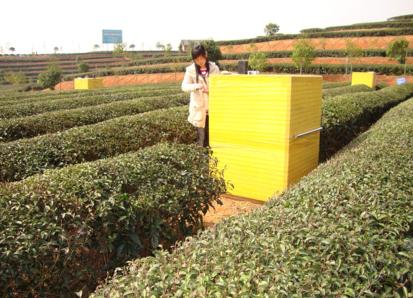Global Warming and Extreme weather: are Greenhouse Gases to be Blamed?
Global warming and increasing extreme weather events are two important indisputable facts under climate change. Nitrous oxide (N2O) and nitric oxide (NO) are two of the most important anthropogenic nitrogen compounds emitted to the atmosphere, which are directly and indirectly involved in global warming and atmospheric chemistry.
Tea plantations are rapidly expanding in China and other countries in the tropical and subtropical zones. For improving the yield and quality of tea leaves, large amounts of N fertilizer are increasingly applied by tea farmers. It is well accepted that high N inputs can easily induce a great deal of nitrogenous gas to produce. But so far there are very few studies including direct measurements of nitrogenous gas fluxes from tea plantations. Therefore, long-term observations of N2O and NO emissions from tea soil in subtropical China are needed.
Currently, a team of researchers from China Agricultural University, the Institute of Subtropical Agriculture, Chinese Academy of Sciences (ISA) conducted a study to investigate the temporal characteristics of N2O and NO emissions, daily emissions were measured over two and a half years period using static closed-chamber/gas chromatograph and chemiluminescent measurement system in a tea field of subtropical central China.
The researchers found that N2O and NO fluxes showed similar temporal trends, which were generally driven by temporal variations in soil temperature and soil moisture content and were also affected by fertilization events. The measured average annual N2O and NO emissions were 10.9 and 3.3 kg N ha-1 yr-1, respectively, highlighting the high N2O and NO emissions from tea fields.
"Nitrification (subdivided into NH4+ oxidation and NO2- oxidation) and denitrification were considered the two major processes involved in N2O emissions from soils, while nitrification and nitrite chemical decomposition were the main processes contributing to NO emissions. High soil temperature can promote NO emissions while high soil water content will restrain NO emissions from tea fields, while N2O emissions had a contrasting response to the soil water content." said Li Yong, a professor at ISA.
The research was supported by the National Natural Science Foundation of China (41671243) and the National Basic Research Program of China (2012CB417105).
The study entitled "Measurement and modeling of nitrous and nitric oxide emissions from a tea field in subtropical central China"was published in the January issue of Nutrient Cycling in Agroecosystems, more details could be found at http://link.springer.com/article/10.1007/s10705-017-9826-1

A photograph taken from tea plantations in Changsha Research Station for Agricultural and Environmental Monitoring, ISA.

Greenhouse gas sampling using the static opaque chamber method
Contact: LI Yong
E-mail: yli@isa.ac.cn
Institute of Subtropical Agriculture, Chinese Academy of Sciences
Download attachments: